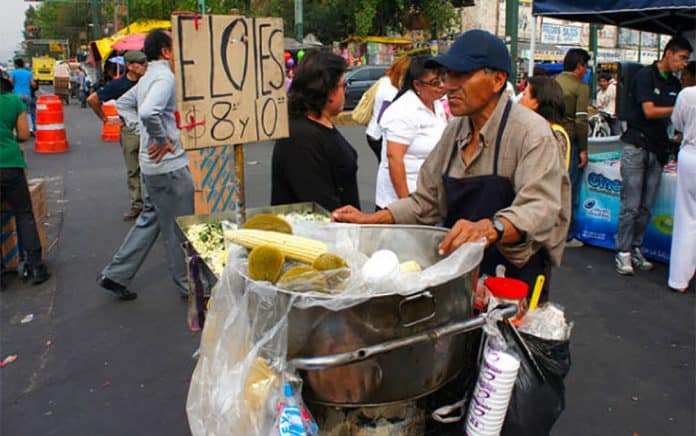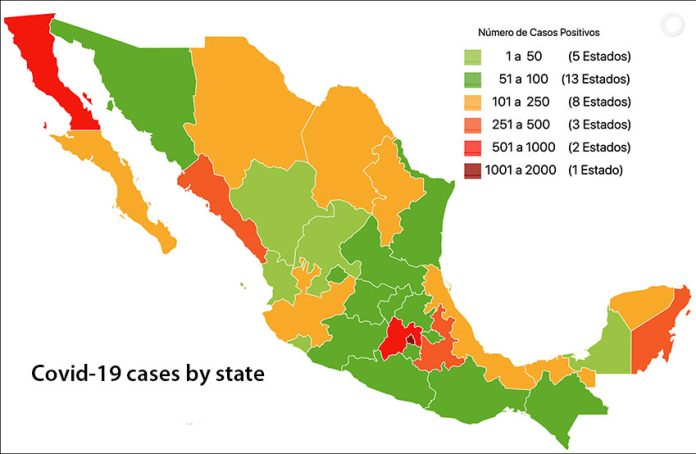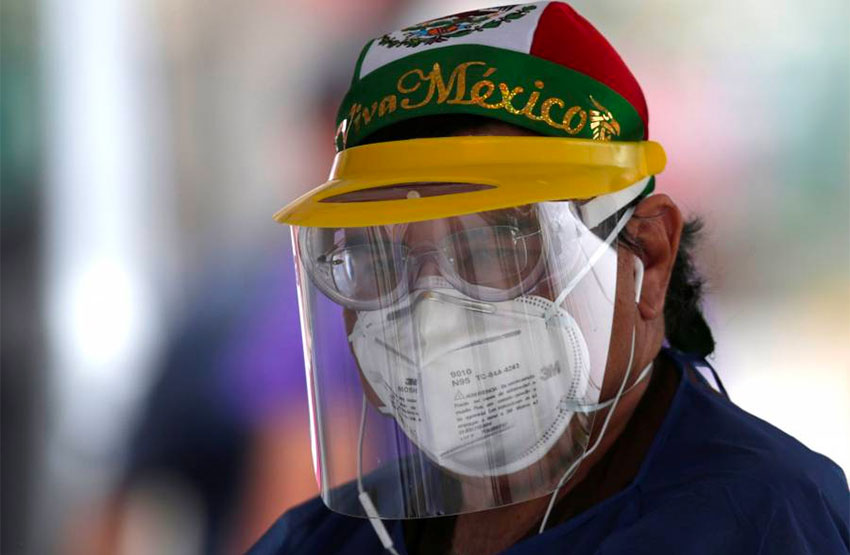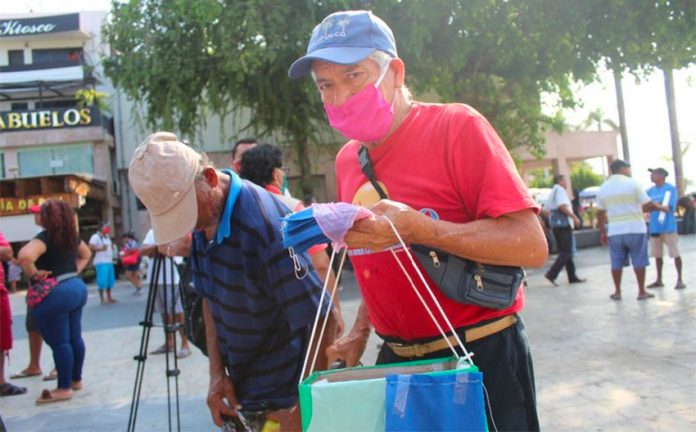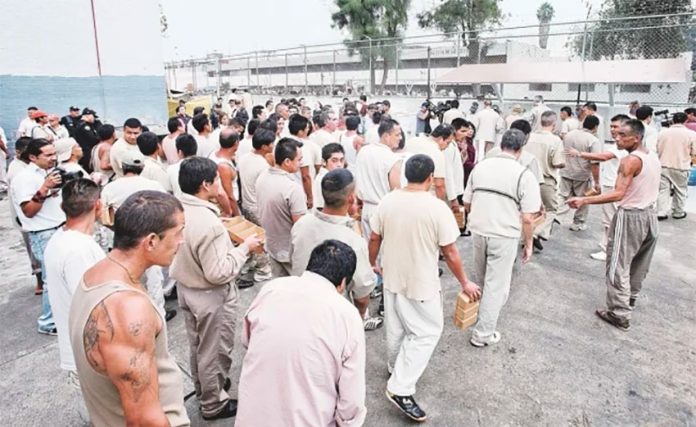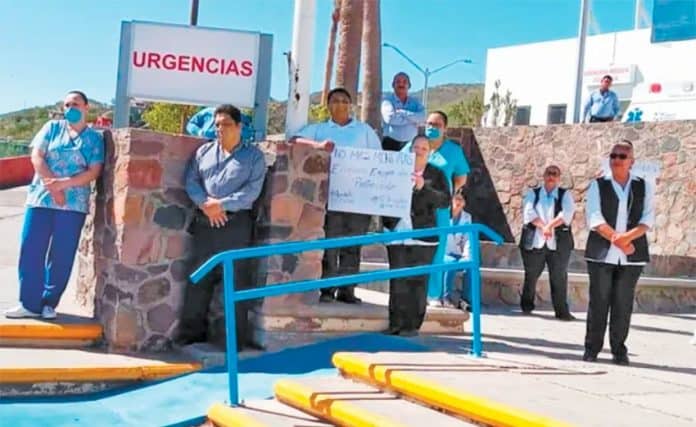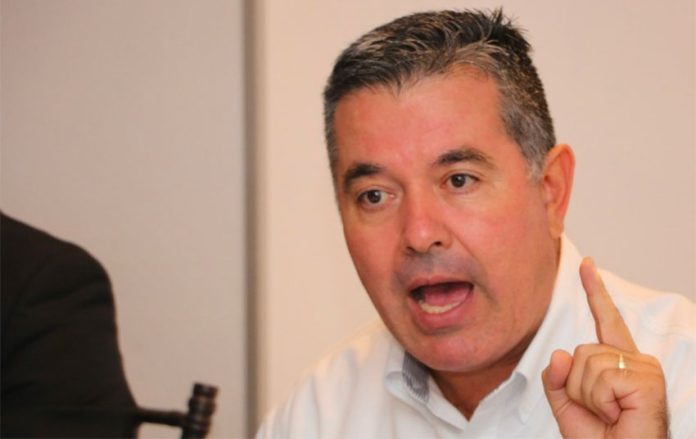Phase three measures to contain the spread of Covid-19 will apply to 463 municipalities with significant outbreaks before the government officially declares the commencement of the most critical stage of the coronavirus pandemic, Deputy Health Minister Hugo Lopez-Gatell said on Thursday.
Speaking at President López Obrador’s morning news conference, López-Gatell said the government was bringing the measures forward for the coronavirus hotspots.
“We have said that reaching phase three is unavoidable; we’re technically not yet in phase three in a generalized way but … given the intensity of transmission, there are areas that have to be treated like phase three,” he said.
López-Gatell said that the 16 boroughs of Mexico City, México state municipalities that are part of the greater metropolitan area of the capital, the Baja California cities of Tijuana and Mexicali, Jalisco capital Guadalajara, Nuevo León capital Monterrey, Puebla city and the Quintana Roo resort city Cancún have the highest rates of Covid-19 transmission in the country.
Culiacán, Sinaloa; Ciudad Juárez, Chihuahua; Monclova, Coahuila; and Villahermosa, Tabasco, are also among the municipalities that will see phase three measures before the government officially declares the commencement of the critical stage of the pandemic in which the number of Covid-19 cases is predicted to rise rapidly.
“Phase three is defined by the generalization of transmission [across the country] not by the number of cases. … If we look [at Mexico] in subregions, we have regions like the Valley of México, and the metropolitan areas that I’ve mentioned where we have [Covid-19] spread that corresponds to phase three,” López-Gatell said.
After declaring on Tuesday that it was only a matter of days before Mexico would enter phase three of the pandemic, the deputy minister said that the government wasn’t considering the possibility of a phase three declaration that only applied to certain parts of the country. A “selective process would be confusing,” he said.
However, López-Gatell said this morning that the imposition of stricter restrictions on people’s movement was recommended for parts of the country where there are larger outbreaks of Covid-19.
To date, however, the federal government has not announced any obligatory home quarantine or a curfew, although the state of Sonora has imposed its own mandatory lockdown.
López-Gatell did announce this morning that the government’s social distancing initiative, including the suspension of all nonessential activities and large gatherings, will be extended by an extra month to May 30.
However, restrictions could be lifted on May 17 in areas of the country where transmission of the disease is low or non-existent, López-Gatell said, explaining that 979 of Mexico’s 2,463 municipalities have not yet reported infections.
He stressed that strict “stay at home” orders remain in place for senior citizens, people with chronic diseases and pregnant women. Schools are currently scheduled to reopen on June 1.
López-Gatell said that Mexico City has seen significant reductions in traffic, public transport use and pedestrian numbers but acknowledged that people’s movement has not declined as much as the government hoped in other cities around the country such as Guadalajara and Tijuana.
Although an average of 380 new confirmed cases of Covid-19 were reported daily over the last week, the deputy minister said that the government was “having success” with the social distancing measures it has implemented.
He said that projections show that the peak of transmission of the disease will be between May 8 and 10 and that the greatest pressure on the health system will come about two weeks later.
By June 25, around 95% of all expected Covid-19 cases in Mexico will have occurred, López-Gatell said, citing projections that assume that mitigation measures are generally followed.
Mexico currently has 5,847 confirmed cases of coronavirus and has recorded 449 deaths.
Source: Reforma (sp), Infobae (sp)
